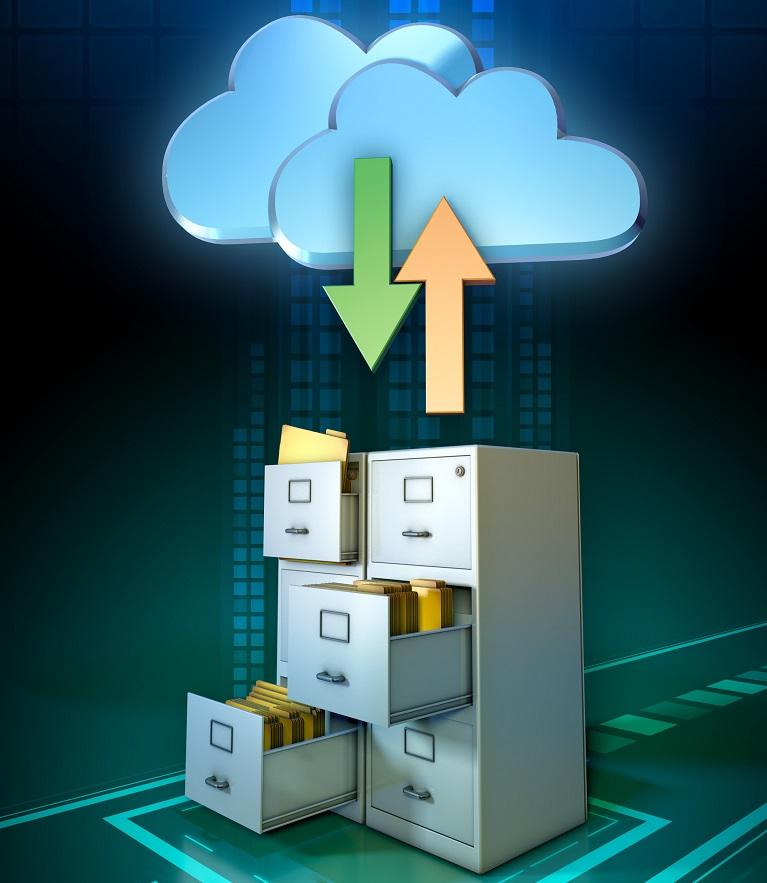Everything you need to know about cloud backup
| November 15, 2019

It’s likely that at some point you’ll want to backup your computer files. This is only the first step in an important process. You’ll next probably realize that the cloud is the way to go. Make sure you understand all the key details concerning the cloud backup. Here’s a comprehensive guide to help you out.
What is cloud backup?
A cloud backup service stores files at a remote location, freeing up your personal hard drive space. The cloud is an online data storage center that uses online-based servers. Cloud backup ensures all of a user’s important files are saved for future recovery if necessary.
A cloud backup is similar to a bank account. Rather than saving money at your home, you give it to a bank and they store it for you. This way, if something were to happen to your home, you wouldn’t lose a lot of money. Likewise, if your hard drive breaks, the cloud backup is there to give you recovery options so no valuable data is lost.

Is it secure?
Cloud backup is only as safe as the provider. Furthermore, it’s technically less safe than storing files on a personal hard drive, as these are in your sole possession and not subject to outside parties. There are a few things to consider when determining whether a system is safe. The first is whether the program has a history of security issues or breaches. If your research concludes a pattern of hacks, mistakes or any other security problems, consider a different option.
Another way to determine if your backup option is secure is checking out its specifications. For example, end-to-end encryption is a nice benefit to look for. This means that the only parties capable of viewing the information are the sending and receiving party and no one else. In this case, your files would be shared to the cloud and no one else could access them.

How do I backup to the cloud?
This all depends on which system you use and what type of device you’re using. For example, smartphones can be backed up to the cloud. Depending on the type of phone you have, there’s typically options in the settings to allow it. Check your phone to see where it’s currently storing information.
In order to learn how to backup to the cloud, you’ll first have to select the system you wish to use for all potential restores and storage. Once you’ve made a decision, it’s important to read their specific guidelines for backup. Most systems have a button you click which should open up a window, allowing you to import specific files. There’s also usually a way to sync your entire hard drive to their cloud program.

What are some benefits?
The main benefit of a cloud backup is the safety net it offers in case your computer or hard drive inexplicably errors. We all have some types of valuable data or files we need saved – cloud backup makes the process easy. Not only does it protect your files, it’s also a capable storage option.
For companies, it is ideal because of the secure file sharing. Organizations are able to securely transfer files to clients without worrying about outside parties seeing them. A cloud backup also gives businesses more leeway with their IT department, creating opportunities for them to focus efforts elsewhere.

What are the best backup services?
With the rapid growth of data, there’s a much greater need for a cloud backup. Fortunately, a lot of services exist to choose from. Dropbox, Box, Google Drive and Microsoft OneDrive all stand out as popular options. However, none of them really elevate above their peers. Companies want sophisticated storage that does much more than backup and store files. That’s why they’re overwhelmingly choosing digital asset management.
Digital asset management (DAM) backs up files securely while offering users many different tools to search and share. It’s a comprehensive enterprise system that accelerates workflows and integrates with numerous applications. Use DAM if you want a system that caters to your specific cloud backup needs.
A cloud backup saves time and resources if implemented correctly. Make sure you understand the types of benefits it offers before deciding to use one.
